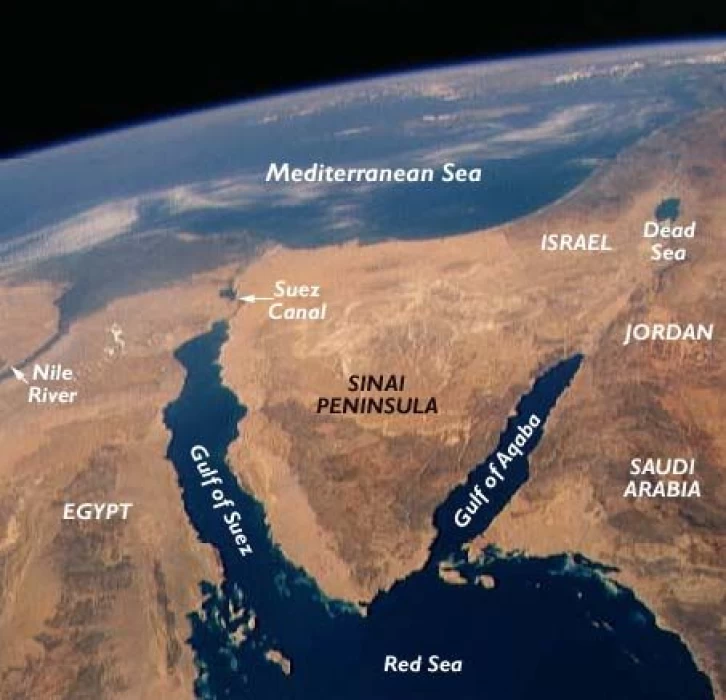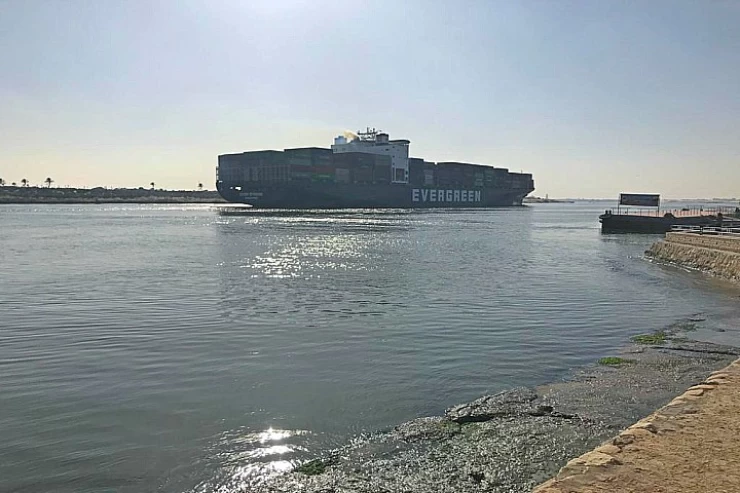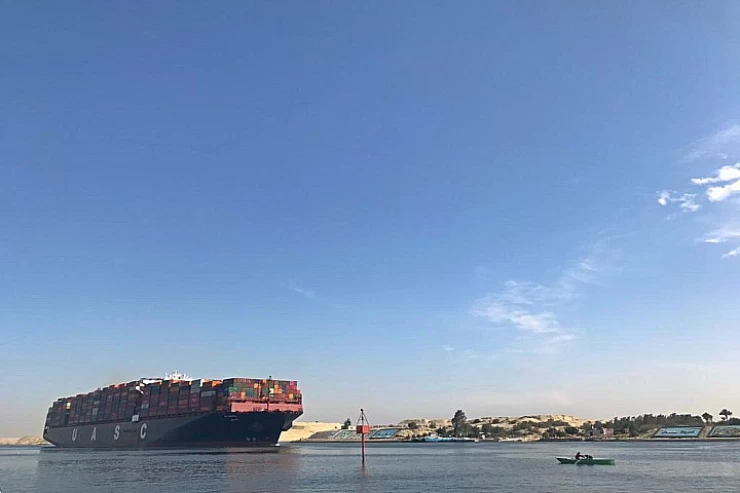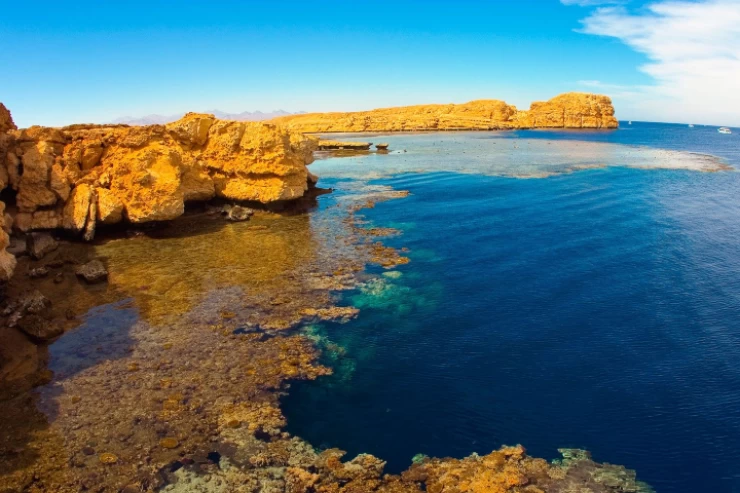
About Suez Gulf, Egypt
Facts about Suez Gulf, Egypt
The Gulf of Suez is a bay on the northern tip of the Red Sea, west of the Sinai Peninsula. The smaller bay to the east of the Sinai Peninsula is the Gulf of Aqaba. The gulf was created within the relatively small but long-inactive Gulf of Suez Fault Basin, approximately 26 million years old.
The Gulf of Suez extends 300 kilometres north-northwestwards, ending at the Egyptian city of Suez and the entrance to the Suez Canal. Along the centre line of the Gulf is the border between Africa and Asia. The entrance to the Gulf is located above the Jamsha oil and gas field. Since the Suez Canal is located at the top of the Red Sea Gulf of Suez is considered one of the most significant bodies of water in the world.
The Gulf forms part of the northwestern arm of the Red Sea located between the continent of Africa and the Sinai Peninsula. This is the third in a series of rift arms in a triple-junction rift system, while the second arm is the Gulf of Aqaba. The length of the Gulf, from its mouth at the Jebel Strait to its head at Suez, is 314 kilometres, and its width ranges from 19-32 kilometres.
The Gulf of Suez is a source of fisheries resources in Egypt, where various types of fish are extracted: ‘shrimp, hart, bourbon, squid.’ The state is making great efforts to improve the conditions of fishermen, facilitate the issuance of licences and control fishing equipment in order to maintain the sustainability of fish wealth.
Latest Articles
Admin
Aswan Governerate in Egypt
One of Egypt's southern governorates is Aswan Governorate. The city of Aswan serves as its capital. At a latitude of 22 north of the equator (also known as the Tropic of Cancer), it is bounded to the north by the Qena Governorate, to the east by the Red Sea Governorate, to the west by the New Valley Governorate, and to the south by the Republic of Sudan.
Admin
Luxor Governorate Egypt
The capital of the Arab Republic of Egypt is Luxor City, which was once known as "Thebes City" because it served as Egypt's capital during the Pharaonic era. It is situated in the South Upper Egypt region, approximately 670 kilometers from the capital Cairo from the south. It is bordered on the north by Qena Governorate, on the south by Aswan Governorate, on the east by Red Sea Governorate, and on the west by New Valley Governorate.
Admin
History of kafr El Sheikh Governorate
Kafr El Sheikh Governorate is an Egyptian governorate, located in the northernmost part of Egypt in the Nile Delta, with Kafr El Sheikh as its capital. It had a population of 3,172,753 in 2015 and an area of 3,748 km². Its entire area is located north of the delta and overlooks the Mediterranean Sea. The main economic activity of the residents of the governorate is agriculture and fishing, especially the southern lands of the governorate and the lands overlooking the Nile River - Rosetta Branch.
Admin
Egypt's New Administrative Capital
The New Administrative Capital is located between the Cairo-Suez and Cairo-Ain Sokhna roads, 60 km from Cairo and the same distance from Ain Sokhna and Suez. The New Administrative Capital is located on the border of Badr City, in the area between the Cairo-Suez and Cairo-Ain Sokhna roads, just after New Cairo, Mostakbal City and Madinaty.
Admin
Al Gharbia Governorate
Gharbia Governorate is one of the governorates full of archaeological sites, whether they are places or facilities (mosques, churches), as the governorate is a destination for visitors to these places throughout the year, whether they are Egyptians from the different governorates.
Admin
Hamata Islands (Qulaan Archipelago) in Marsa Alam
The Hamata area, south of Marsa Alam in the Red Sea, is one of the most important parts of the Wadi El Gemal Reserve, whether in the desert or the sea. It was named after the sorrel plant, which was distorted to Hamata.

















